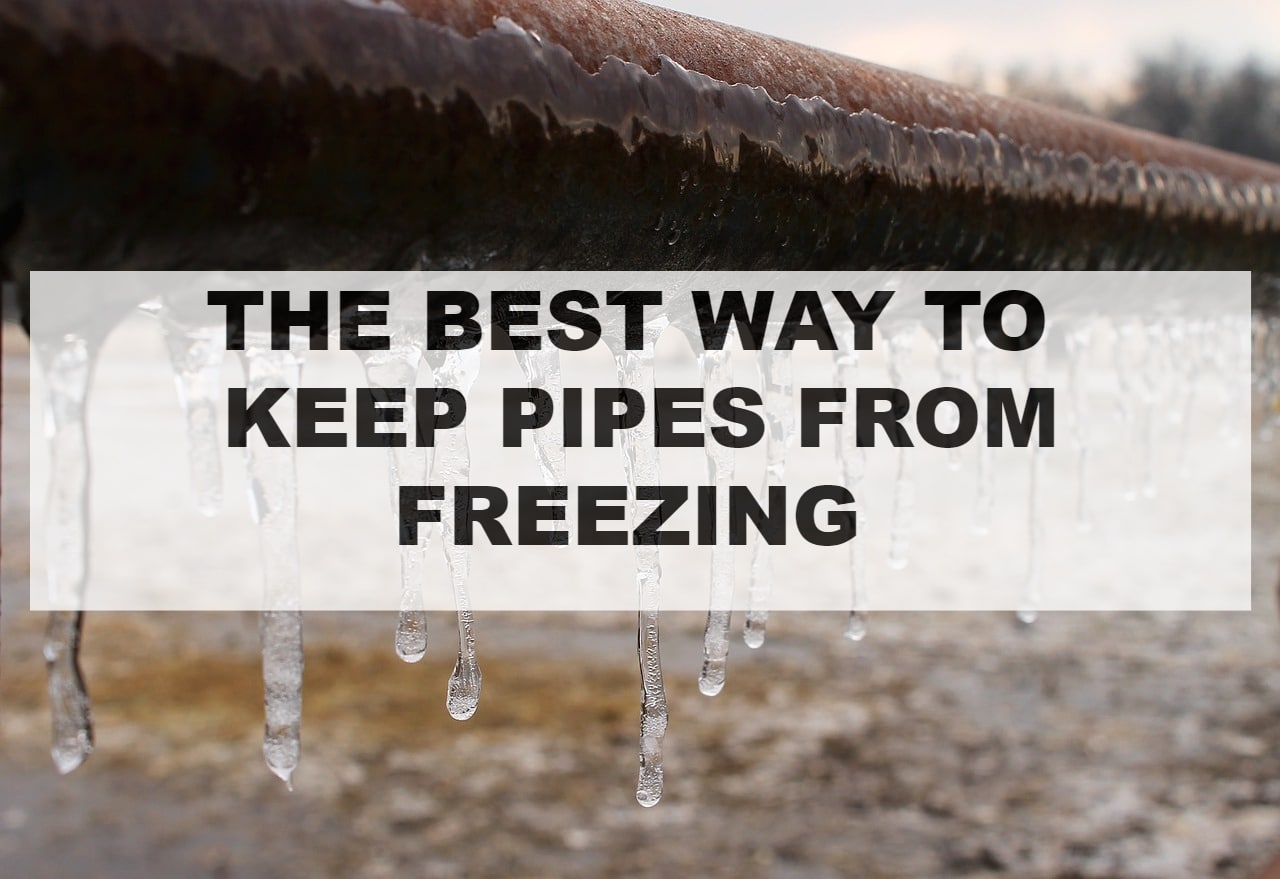
When temperatures drop, frozen pipes are one of the greatest risks to damaging your property. The best way to keep water pipes from freezing is to slow or stop the transfer of heat from the water in them. It is a basic law of physics that when water approaches freezing, it begins to expand. Once the temperature drops below freezing, water will expand by approximately 9%. Like a can of soda left in a freezer too long, it’s enough to split, crack or burst any water pipe in any building. Flooring, cabinets, and walls can become quickly saturated and cause serious damage to property.
Thinking Ahead: How to Help Prevent Pipes From Freezing
Before ice forms, water will ‘supercool’ and start to expand once the temperature begins to drop near freezing. Once the temperature dips below 20 F degrees outside, pipes in a vulnerable location in your house are subjected to a risk of ice formation. Pipes that are vulnerable to freezing are generally found in an insulated but unheated area, or located inside exterior walls or even along or near exterior walls or basements.
You can take steps in advance of cold weather. Before winter arrives, identifying areas of risk is a good start to prevent pipes from freezing. Once you have identified areas of vulnerability, you can take further preventive steps against pipes bursting and, if they do, learn what to do if it happens. Unless you’re a home plumber, it’s unlikely that you will be able to control the water immediately to limit the damage before a real plumber arrives.
What is the Best Way to Keep Pipes from Freezing?
Pipe insulation is a good first step. Apply thermostatically controlled heat tape on pipes in vulnerable locations. Though most basements are kept warm during the winter months, drafts or poor insulation can present problems. Unless your basement is fully heated, it is vulnerable—37% of all frozen pipe occurrences happen there. Inexpensive foam pipe insulation should be enough for moderately cold basements. Fit insulation sleeves or wrapping on vulnerable pipes. Do not leave gaps that expose the pipes to cold air.
There are two good reasons to leave a faucet dripping.
- First, pipes freeze and burst because of the excessive water pressure from expansion. A slow drip of water can provide pressure relief to the pipe to prevent it from cracking or splitting. If hot and cold lines serve a faucet then be sure to turn each one of them on to make sure water is moving through each line.
- Secondly, dripping water is like a canary in the coal mine. If the water stops dripping then the line has frozen and you will need to take action to thaw the line.
Leaving town for a while during winter? Make sure that all areas of vulnerability are taken care of and keep that furnace running at 60 degrees. Make sure your oil tank is full, too, before leaving town, or at least has enough oil to last while you are gone. If your oil tank happens to run dry when you are away and the pipes freeze and burst, there is a chance your insurance claim might be denied. The line between accident and neglect is a fine one.
Other pointers like leaving kitchen and bathroom cabinets open to let warm air circulate under sinks and in adjacent outside walls is a good idea. Leave a space heater on in vulnerable areas. Make sure garden hoses are disconnected, too. Ice can back up through the lines into the exterior walls of your house or garage and rupture a line.
Mitigating the Problem: Learn What to Do if Pipes Burst
When cold snaps strike, be ready and be proactive. Quick inspections of vulnerable areas will help. Pipes coated in frost are a tell-tale sign. If your toilets are slow or have stopped refilling, or the water has stopped flowing when you turn a faucet, it’s time to act fast. Doing so minimizes the damage and reduces the cost of repairs.
If you don’t know how to turn on off the water, call a local plumber that can guide you or get to your home immediately but if you are familiar with where the particular line or section of plumbing is, you’ll need to shut the water supply off. If the entire house is the only option, then do it. Ice in the pipes can act as a plug, and the real damage begins with thawing. If the water flow is not turned off it will gush out like Old Faithful once the line begins to thaw. If you do not know where the main water valve is to your house, now is the time to find it. It’s either an old style gate valve that you have to twist shut or a newer ball valve that shuts off with a lever.
Once the line has been shut off, begin to thaw it. Have a mop and bucket handy, and towels. Space heaters, heat lamps, or hair dryers will all work to thaw frozen lengths of pipe. It’s not too late to wrap freezing pipes with thermostatically controlled heat tape, either. Do not take a propane torch to the pipes as you will only be creating a fire risk and adding to your problems.
Have Water Damage Already? Call the Professionals
If you are not home when the accident happens, you should still cut the water supply first thing to minimize flooding. You can begin the mopping and drying, but contact Octagon Cleaning & Restoration, your water damage mitigation expert. If the damage is severe, call your insurance agent to report it. And then start the drying process. It may be a lengthy one, and it needs to be thorough.
